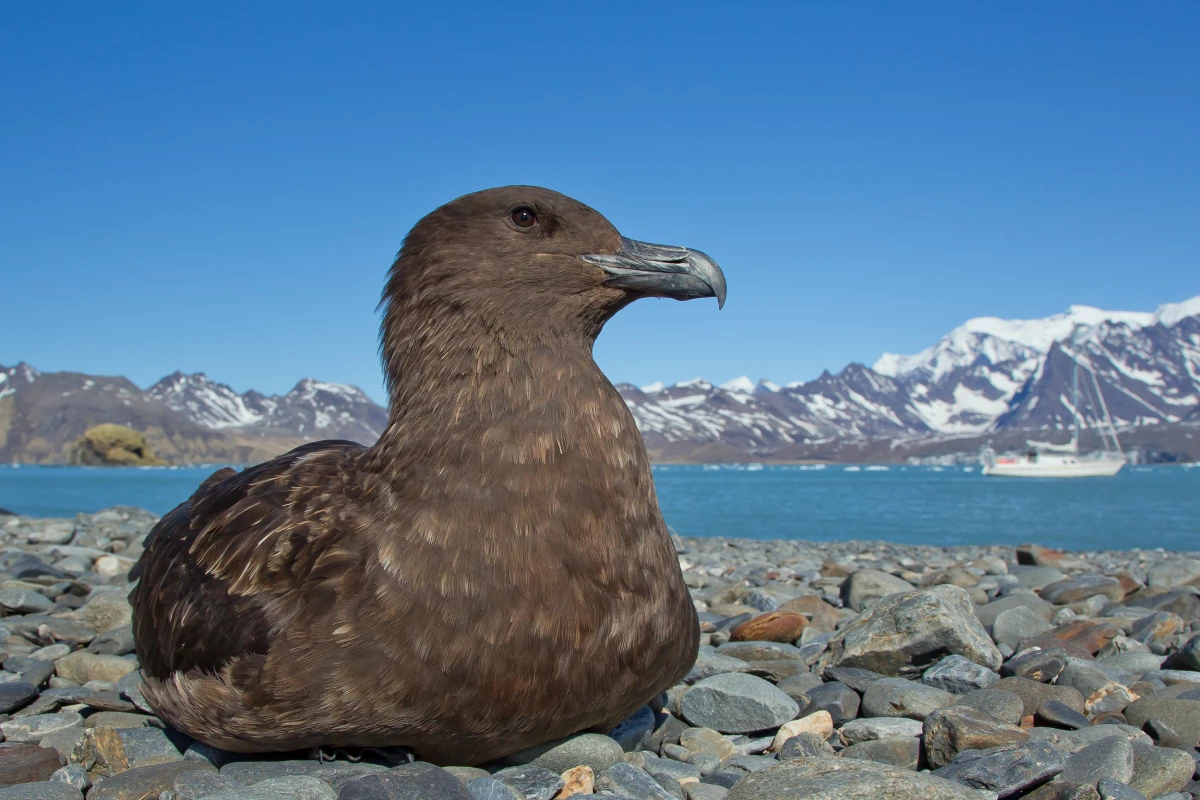It was only a matter of time, but highly pathogenic avian influence (HPAI) has officially found its way to bird populations in Antarctica, after dead migratory brown skua on Bird Island returned positive test results.
British Antarctic Survey (BAS) staff were alerted to symptomatic and dead brown skua (Catharacta antarctica) on Bird Island, a subantarctic stretch of land south of the Polar Front in the Antarctic region. The test swabs were processed by the UK’s Animal and Plant Health Agency laboratories before returning the results the researchers had already feared.
While HPAI has mostly been in the headlines around the globe for its impact on commercial poultry production, migratory birds pose the biggest threat to spreading the virus around the globe and creating opportunities for it to evolve and spill over into other groups such as mammals.
The gull-like Antarctic brown skua most likely contracted HPAI in Argentina, which is along their migratory route through South America, where there have been significant outbreaks in wild birds and also seals.
Naturally, the BAS – which has a research station on Bird Island – has suspended field work that involves animal handling, and is closely monitoring other seabird colonies.
While scientists cannot be certain HPAI hadn’t already arrived in Antarctica, it’s notoriously difficult to monitor in wild bird populations. Bird Island was a likely contender for where it would appear, however; the seabird colonies on the three-mile (4.8-km ) long stretch of land are some of the most closely monitored populations in the world.
The island is an important base for scientific research, as it’s home to 50,000 breeding pairs of penguins, 650,000 pairs of fur seals, as well as large, diverse populations of seabirds. The island is free of rats, which encourages small burrowing birds to use the island as a breeding haven, but it’s also a refuge for a large number of endangered species. As such, the spread of HPAI across the small island could have devastating consequences.
It’s also devastating news for the brown skua population, with recent research suggesting the predatory species, which feeds on other seabirds, has undergone a 47% decline in the last five years, with the cause largely unknown but most likely nest predation, kleptoparasitism and prey competition.
The current outbreak of HPAI – H5N1 – which began gathering speed in late 2021, has likely killed millions of wild birds, but the nature of monitoring transmission means official numbers are just the tip of the iceberg.
While still a virus primarily spread among birds, spillover into mammals such as seals, minks and other wildlife – and when transmission did not occur through scavengers eating infected carcasses – there’s ongoing cause for concern.
Essentially now a panzootic, a non-human pandemic, the World Health Organization (WHO) has flagged that an increasing number of mammalian infections poses a risk to humans.
"With the information available so far, the virus does not appear to be able to transmit from one person to another easily, but vigilance is needed to identify any evolution in the virus that can change that,” said Dr Sylvie Briand, Director of Epidemic and Pandemic Preparedness and Prevention, WHO.
Source: British Antarctic Survey





